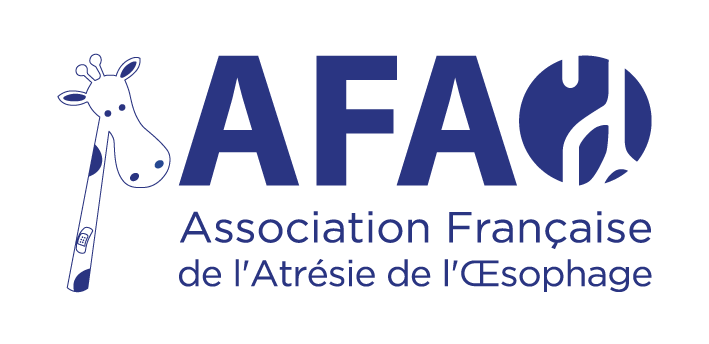Simulateur d'aides financières et sociales Commencer
Prix AFAO-Fanny 2014
Titre du projet récompensé : Interêt de l’encencement d’une matrice acellulaire par des cellules souches mésenchymateuses autologues pour l’ingénierie tissulaire de l’oesophage.
En juin 2014, l’AFAO a remis 15 000 euros au Professeur Pierre Cattan, adjoint au Chef de Service de Chirurgie Digestive de l’Hôpital Saint Louis à Paris, afin de permettre à son équipe de poursuivre sa recherche sur le remplacement œsophagien et l’ingénierie tissulaire.
Responsable du projet : Pierre Cattan
Composition de l’équipe de recherche :
Tigran Poghosyan
Jonathan Catry
Thomas Domet
Valérie Vanneaux
Rony Sfeir
Laurent Michaud
Frédéric Gottrand
Patrick Bruneval
Le Projet Cattan
Résumé du projet :
L’objectif de notre travail est de créer par ingénierie tissulaire un néo-œsophage fonctionnel pour le traitement des enfants atteints d’atrésie de l’œsophage. L’ingénierie tissulaire consiste à assembler au laboratoire un support tridimensionnel avec différents types de cellules prélevées sur le patient lui-même, en vue de confectionner un substitut pour remplacer un organe défectueux ou enlevé. Des remplacements de vessie et de trachée ont ainsi été réalisés avec succès chez l’homme. Pour le remplacement de l’œsophage, l’ingénierie tissulaire pourrait être une alternative séduisante aux techniques conventionnelles, permettant de reconstituer un neo-œsophage ayant les mêmes caractéristiques que l’œsophage enlevé tout en préservant l’intégrité de l’estomac ou du colon qui sont actuellement utilisés pour les reconstructions. Nous nous proposons d’analyser la possibilité d’effectuer un remplacement d’un segment de 5 cm d’œsophage par cette approche chez 20 cochons. Les cellules utilisées seront des cellules souches mésenchymateuses dont les capacités à donner naissance à différents types cellulaires et ainsi régénérer des tissus endommagés sont particulièrement intéressantes dans ce contexte. Une telle approche thérapeutique aurait un intérêt certain pour les enfants atteints d’atrésie, chez lesquels l’absence de développement d’un court segment de l’œsophage conduit à la réalisation d’interventions complexes aux résultats fonctionnels souvent imparfaits, et parfois au remplacement de l’ensemble de l’œsophage. Ce projet vise à obtenir un substitut de longueur adaptée à chaque enfant, mis en place par une procédure chirurgicale simple, et à préserver les organes intra-abdominaux (estomac, colon). Notre équipe est soutenue dans ce projet par l’AFAO depuis 2007. Ce travail fait suite à l’analyse en cours des conditions de construction d’un substitut fait d’une matrice acellulaire et de cellules souches mésenchymateuses, travail soutenu par le prix de l’innovation 2013 de l’AFAO.
Abstract :
Oesophageal replacement by the colon or the stomach for malignant and benign oesophageal diseases exposes to significant morbidity, mortality and often leads to unsatisfactory functional results. We previously analysed in a tissue engineered porcine model the ability of an acellular scaffold seeded by autologous myoblasts to promote tissue remodeling into an oesophageal phenotype. The encouraging but perfectible results of this study brought us to another cellular type: the mesenchymal stem cells (MSC), which are non-haematopoietic progenitor multipotent cells and may have a promising therapeutic role in regenerative medicine.
Objective: To measure in a porcine model the success of circumferential replacement of cervical oesophagus by a substitute made of an acellular scaffold (SIS, Surgisis®, COOK) seeded by autologous MSC.
Methods: First, the optimal conditions of SIS seeding by MSC (concentration, time of culture on the scaffold) will be determined through the analyses of cell viability, phenotypic stability on the scaffold, and the architecture of the substitute using MTT test, flow cytometry analysis, RT-qPCR, differentiation tests and immunohistochemistry. Then, a circumferential replacement of 5-cm cervical oesophagus will be performed in 20 mini-pigs, systematically protected by a covered extractible stent (Polyflex Airway Stent® – Boston Scientific). There will be 2 groups: group A: SIS seeded by MSC (n=10); group B non-seeded SIS (n=10). Before replacement, an in vivo maturation of the tube-shaped implant will be processed during 14 days in the great omentum. Two days after esophageal replacement, the food regimen will be given normally. Three months later, the stent will be removed by endoscopy. A new stent might be replaced in case of migration or stenosis post stent removal, Success will be defined as animal survival at 6 months without stent and with exclusive oral nutrition. The animals will be sacrificed every 3 months during a 12-month period and the structure and phenotype of the graft will be analysed by immunohistochemistry.
Results: 1. In animals of group A: restoration of nutritional autonomy and development of an oesophageal phenotype of the graft area at 6 months. 2. In animals of group B: stenosis after stent removal and absence of development of an oesophageal phenotype of the graft area.

